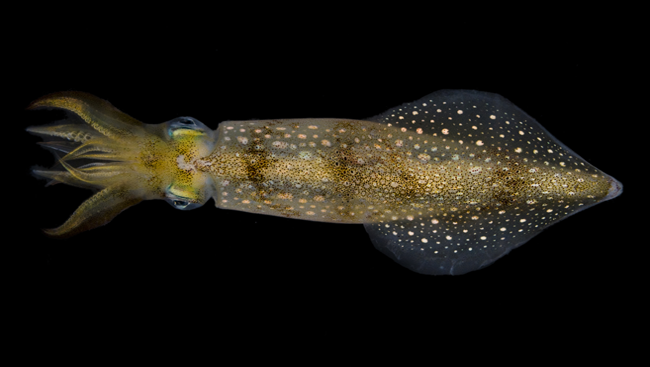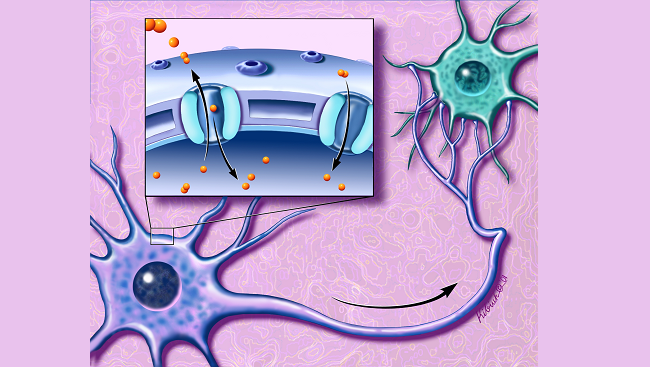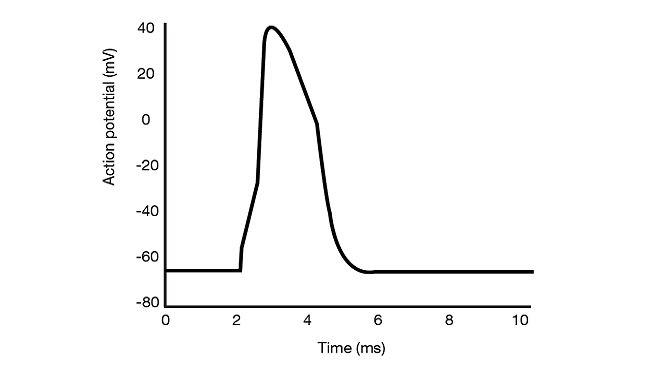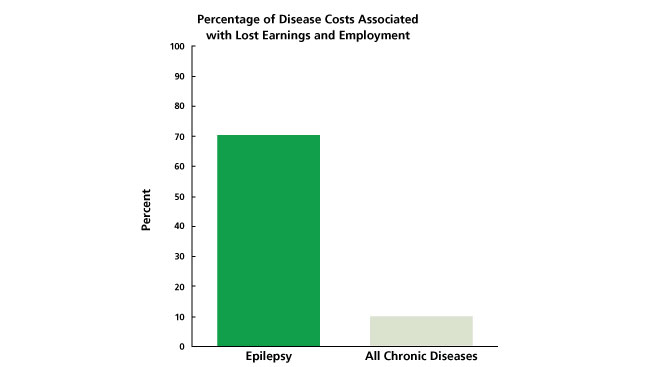Electrifying the Brain
- Published8 Oct 2012
- Reviewed8 Oct 2012
- Author Aalok Mehta
- Source BrainFacts/SfN
To understand how brain cells communicate, scientists had to think big. By studying enormous nerve cells in the squid, researchers determined how brain cells generate and transmit electrical messages. Knowledge about these signals and what happens when they break down is helping explain disorders such as epilepsy and guiding new treatments.
Squid Reveal How Nerve Cells Talk
Every summer, dozens of brain researchers make a pilgrimage to the Marine Biological Laboratory in Woods Hole, Massachusetts. The reason? For some experiments, neuroscientists need to think big, and in neuroscience little comes bigger than the nerve fibers of longfin squid (Loligo pealeii), which inhabit the Atlantic coast during the summer months.
Squid giant nerve cells are among the largest cells in nature. Their extensions, or axons, can be almost one thousand times as large in diameter as their human counterparts — or about the width of a human hair. The study of squid axons led scientists to one of the most important discoveries about the brain: the mechanism behind the “action potential,” the electrical language brain cells use to communicate.
The action potential controls how nerve cells interact with one another and other organs. These signals are ultimately responsible for everything the brain does. The action potential allows information to move through the body at fast speeds over long distances. In some cases, these messages can zip along at more than 100 meters per second (in excess of 220 miles an hour).
By stringing together thousands of action potentials each second, webs of neurons rapidly sort through incoming information from the eyes and ears, coordinate complex tasks like walking, and maintain the delicate timing of heartbeats.
Big Plans For Giant Cells
As early as the 19th century, researchers knew that nerve cells used action potentials to communicate, but how they were generated and transmitted remained a mystery. British physiologists Alan Hodgkin and Andrew Huxley wanted to understand how electrical changes inside axons led to the formation of action potentials. Because most mammalian cells were too small and delicate to study using the technology of the time, Hodgkin and Huxley set their sights on squid giant nerve cells.
By studying changes in electrical signaling in squid axons, Hodgkin and Huxley discovered the mechanism cells use to generate and transmit action potentials.
A Matter of Electricity
Axons are where the magic of nerve cells happens — the spot where the action potential originates.
Hodgkin and Huxley planted electrical sensors inside and outside of squid giant axons so they could measure changes in electricity as an impulse moved through the nerve cell. Recognizing the large amounts of data yielded from these experiments, the pair created mathematical models to help them make sense of action potentials.
All Fired Up
Hodgkin and Huxley found that when a brain cell is at rest, axons normally pump positively charged atoms, called ions, out of the cell, creating a negative charge inside the cell. When an action potential “fires,” the cell opens up channels near the beginning of the axon that allow these ions to flow back in, generating an electrical current. This process then rapidly proceeds down the length of the axon — essentially making the axon briefly act like a live electrical wire.
Hodgkin and Huxley shared the 1963 Nobel Prize in Physiology or Medicine for this research.
Through the Channel
By studying squid and other animals, scientists have learned more about how ion channels — the molecular tunnels in the cell membrane that allow the movement of ions in and out of the cell — “drive” action potentials. Research shows some channels, which allow the movement of sodium ions into the axon, open at the beginning of an action potential. Others open slightly later and permit the passage of potassium ions out of the axon, “resetting” the cell's voltage. Once an action potential starts, it travels to the end of the axon and signals to the next nerve cell.
In some situations ion channels malfunction. As a result, some action potentials become compromised. Understanding ion channel function in healthy brains is important for scientists searching for what goes wrong when channels fail, as in some cases of epilepsy.
Electrical Misfires Lead To Disease
Hodgkin and Huxley’s findings forever changed what researchers understood about how brain cells communicate. Their legacy extends far beyond understanding how nerve cells send electrical signals. Today, foundational basic research is guiding new medical treatments for diseases such as epilepsy and multiple sclerosis (MS).
Channel Malfunction in Disease
Hodgkin and Huxley's work is helping to answer questions about a debilitating group of diseases known as “channelopathies.” In these conditions ion channels do not function properly due to an inherited mutation, a toxin, or an autoimmune condition in which the body attacks itself. This leads to cells that fire too easily or do not fire enough, causing a wide variety of symptoms. Channel disruptions are thought to contribute to many common neurological conditions, including epilepsy, headache, and movement and pain disorders.
In recent years, scientists have come to recognize that several genetic forms of epilepsy are caused by mutations in ion channels. By studying the nature of mutations found in these forms of epilepsy, brain scientists are learning how different channels are distributed in the brain, what their roles are, and how they malfunction. Researchers hope this information will lead to a new understanding of seizure disorders, as well as other channelopathies, and eventually lead to new treatments.
Hodgkin and Huxley's research is also informing the study of diseases in which myelin — an insulating material that helps action potentials move even faster — becomes damaged, such as in MS. Some studies suggest changes in sodium channels may contribute to symptoms of MS and their relief. By better understanding the relationships between these channel changes and MS symptoms, researchers may be able to develop new therapies to treat the disease.
Hodgkin and Huxley's findings using squid giant axons inspired generations of neuroscientists to continue to ask big questions about how nerve cells work, and led to the creation of techniques used by researchers today to probe nerve cell structure and function.
CONTENT PROVIDED BY
BrainFacts/SfN





















